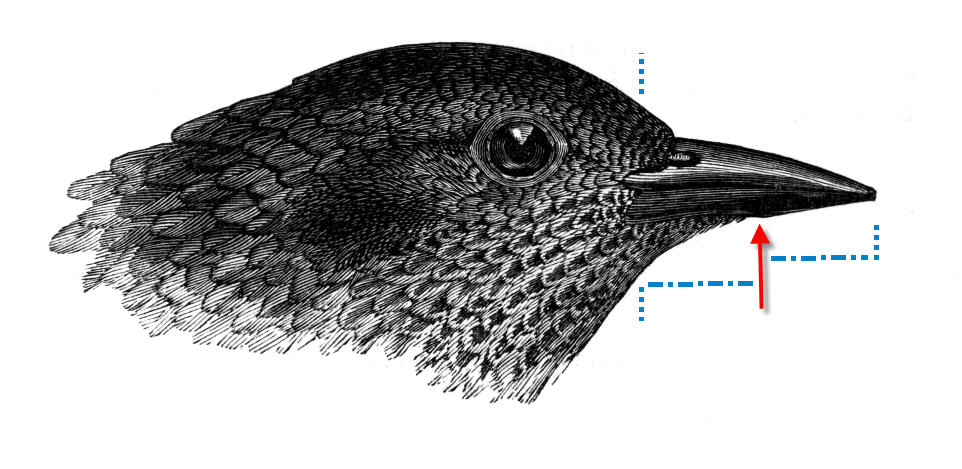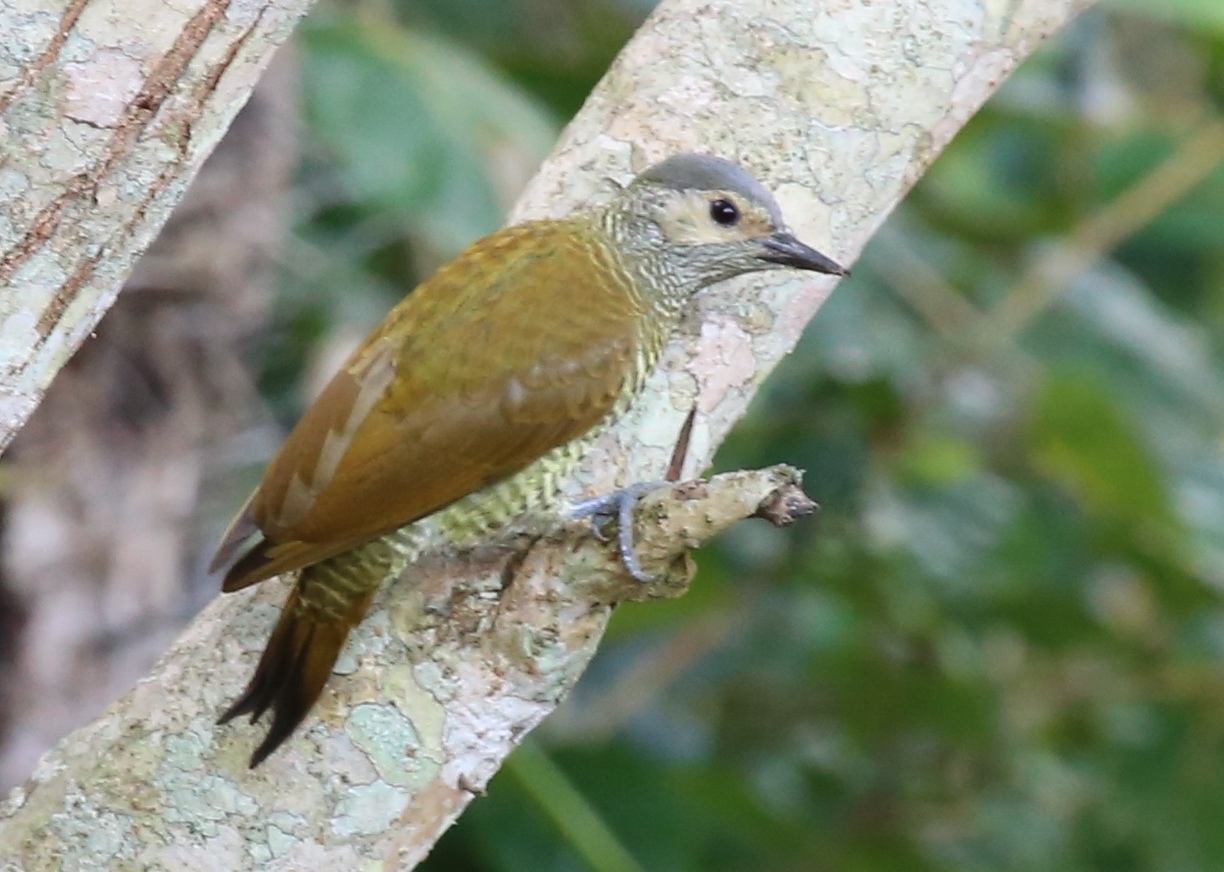|
Rufous Woodpecker
The rufous woodpecker (''Micropternus brachyurus'') is a medium-sized brown woodpecker native to South and Southeast Asia. It is short-billed, foraging in pairs on small insects, particularly ants and termites, in scrub, evergreen, and deciduous forests and is noted for building its nest within the carton nests of arboreal ants in the genus ''Crematogaster''. It was for sometime placed in the otherwise Neotropical genus ''Celeus'' but this has been shown to be a case of evolutionary convergence and molecular phylogenetic studies support its placement in the monotypic genus ''Micropternus''. Taxonomy This species was formerly placed in the South American genus ''Celeus'' due to external resemblance but its disjunct distribution placed it in doubt. Studied in 2006 based on DNA sequence comparisons have confirmed that the rufous woodpecker is not closely related to ''Celeus'' and is a sister of the genus ''Meiglyptes'' and best placed within the monotypic genus ''Micropternus''. Th ... [...More Info...] [...Related Items...] OR: [Wikipedia] [Google] [Baidu] |
Colaptes
''Colaptes'' is a genus of birds in the woodpecker family Picidae. The 14 species are found across the Americas. ''Colaptes'' woodpeckers typically have a brown or green back and wings with black barring, and a beige to yellowish underside, with black spotting or barring. There are usually colorful markings on the head. Many of these birds – particularly the northerly species – are more terrestrial than usual among woodpeckers. Historically, there has been considerable uncertainty in assigning woodpecker species to genera and it is only by comparing DNA sequences that it has become possible to confidently place many of the species. Taxonomy The genus ''Colaptes'' was introduced by the Irish zoologist Nicholas Aylward Vigors in 1825 with the northern flicker (''Colaptes auratus'') as the type species. The name is from the Ancient Greek κολάπτης (''kolaptēs'') meaning "chiseller". The genus forms part of the woodpecker subfamily Picinae and has a sister r ... [...More Info...] [...Related Items...] OR: [Wikipedia] [Google] [Baidu] |
Acrobat Ant
''Crematogaster'' is an ecologically diverse genus of ants found worldwide, which are characterised by a distinctive heart-shaped gaster (abdomen), which gives them one of their common names, the Saint Valentine ant. Members of this genus are also known as cocktail ants because of their habit of raising their abdomens when alarmed. Most species are arboreal (tree-dwelling). These ants are sometimes known as acrobat ants. Acrobat ants acquire food largely through predation on other insects, such as wasps.Schatz, Bertrand, and Martine Hossaert-Mckey. "Interactions of the Ant Crematogaster Scutellaris with the Fig/fig Wasp Mutualism." Ecological Entomology 28.3 (2003): 359-68. Print. They use venom to stun their prey and a complex trail-laying process to lead comrades to food sources. Like most ants, ''Crematogaster'' species reproduce by partaking in nuptial flights, where the queen acquires the sperm used to fertilize every egg throughout her life. Predatory behavior Acrobat ant ... [...More Info...] [...Related Items...] OR: [Wikipedia] [Google] [Baidu] |
Bird Nest
A bird nest is the spot in which a bird lays and incubates its eggs and raises its young. Although the term popularly refers to a specific structure made by the bird itself—such as the grassy cup nest of the American robin or Eurasian blackbird, or the elaborately woven hanging nest of the Montezuma oropendola or the village weaver—that is too restrictive a definition. For some species, a nest is simply a shallow depression made in sand; for others, it is the knot-hole left by a broken branch, a burrow dug into the ground, a chamber drilled into a tree, an enormous rotting pile of vegetation and earth, a shelf made of dried saliva or a mud dome with an entrance tunnel. The smallest bird nests are those of some hummingbirds, tiny cups which can be a mere across and high. At the other extreme, some nest mounds built by the dusky scrubfowl measure more than in diameter and stand nearly tall. The study of birds' nests is known as ''caliology''. Not all bird species bui ... [...More Info...] [...Related Items...] OR: [Wikipedia] [Google] [Baidu] |
Erythrina
''Erythrina'' is a genus of plants in the pea family, Fabaceae. It contains about 130 species, which are distributed in tropical and subtropical regions worldwide. They are trees, with the larger species growing up to in height. The generic name is derived from the Greek word , meaning "red", referring to the flower color of certain species. Names Particularly in horticulture, the name coral tree is used as a collective term for these plants. Flame tree is another vernacular name, but may refer to a number of unrelated plants as well. Many species of ''Erythrina'' have bright red flowers, and this may be the origin of the common name. However, the growth of the branches can resemble the shape of sea coral rather than the color of ''Corallium rubrum'' specifically, and this is an alternative source for the name. Other popular names, usually local and particular to distinct species, liken the flowers' red hues to those of a male chicken's wattles, and/or the flower shape to i ... [...More Info...] [...Related Items...] OR: [Wikipedia] [Google] [Baidu] |
Bombax
''Bombax'' is a genus of mainly tropical trees in the mallow family. They are native to western Africa, the Indian subcontinent, Southeast Asia, and the subtropical regions of East Asia and northern Australia. It is distinguished from the genus ''Ceiba'', which has whiter flowers. Common names for the genus include silk cotton tree, simal, red cotton tree, kapok, and simply bombax. Currently four species are recognised, although many plants have been placed in the genus that were later moved. The genus is best known for the species ''Bombax ceiba'', which is widely cultivated throughout tropical and sub-tropical regions of the world. It is native to southern and eastern Asia and northern Australia. ''Bombax'' species are used as food plants by the larvae of some Lepidoptera species including the leaf-miner '' Bucculatrix crateracma'' which feeds exclusively on ''Bombax ceiba''. The tree appears on the flag of Equatorial Guinea. Description ''Bombax'' species are among the ... [...More Info...] [...Related Items...] OR: [Wikipedia] [Google] [Baidu] |
Celeus Brachyurus
The rufous woodpecker (''Micropternus brachyurus'') is a medium-sized brown woodpecker native to South and Southeast Asia. It is short-billed, foraging in pairs on small insects, particularly ants and termites, in scrub, evergreen, and deciduous forests and is noted for building its nest within the carton nests of arboreal ants in the genus ''Crematogaster''. It was for sometime placed in the otherwise Neotropical genus ''Celeus'' but this has been shown to be a case of evolutionary convergence and molecular phylogenetic studies support its placement in the monotypic genus ''Micropternus''. Taxonomy This species was formerly placed in the South American genus ''Celeus'' due to external resemblance but its disjunct distribution placed it in doubt. Studied in 2006 based on DNA sequence comparisons have confirmed that the rufous woodpecker is not closely related to ''Celeus'' and is a sister of the genus '' Meiglyptes'' and best placed within the monotypic genus ''Micropternus''. ... [...More Info...] [...Related Items...] OR: [Wikipedia] [Google] [Baidu] |
Gecinulus
''Gecinulus'' is a genus of birds in the woodpecker family Picidae. The species are found in South and Southeast Asia. Taxonomy The genus ''Gecinulus'' was introduced by the English zoologist Edward Blyth in 1840 to accommodate the pale-headed woodpecker (''Gecinulus grantia''). The genus name is a diminutive of the genus name ''Gecinus'' which had been introduced by the German ornithologist Friedrich Boie in 1831. ''Gecinus'' combines the Classical Greek Ancient Greek includes the forms of the Greek language used in ancient Greece and the ancient world from around 1500 BC to 300 BC. It is often roughly divided into the following periods: Mycenaean Greek (), Dark Ages (), the Archaic peri ... ''gē'' meaning "earth" or "ground" with ''kineō'' meaning "to move". The genus contains three species: References Bird genera Taxa named by Edward Blyth Taxonomy articles created by Polbot {{woodpecker-stub ... [...More Info...] [...Related Items...] OR: [Wikipedia] [Google] [Baidu] |
Dinopium
''Dinopium'' is a genus of birds in the woodpecker family Picidae. The species are found in South and Southeast Asia. The genus was introduced by the French polymath Constantine Samuel Rafinesque in 1814 to accommodate the common flameback (''Dinopium javanense''). The name combines the Classical Greek meaning "mighty" or "huge" and ''ōps/ōpos'' meaning "appearance". A large phylogenetic study of the woodpecker family Picidae published in 2017 found that the genus was paraphyletic. The olive-backed woodpecker (''Dinopium rafflesii'') is more closely related to the pale-headed woodpecker The pale-headed woodpecker (''Gecinulus grantia'') is a species of bird in the family Picidae. It is found in Bangladesh, Bhutan, China, India, Laos, Myanmar, Nepal, Thailand, and Vietnam. Its natural habitats are subtropical or tropical dry fore ... (''Gecinulus grantia'') than it is to other members of the genus ''Dinopium''. Species As presently constituted, the genus contains the f ... [...More Info...] [...Related Items...] OR: [Wikipedia] [Google] [Baidu] |
Geocolaptes
The ground woodpecker (''Geocolaptes olivaceus'') is one of only three ground-dwelling woodpeckers in the world (the others are the Andean and campo flickers). It inhabits rather barren, steep, boulder-strewn slopes in relatively cool hilly and mountainous areas of South Africa, Lesotho and Eswatini and has yet to be recorded outside of Southern Africa. It is found in a broad swath running from southwest to northeast, from the Cape Peninsula and Namaqualand to Mpumalanga. It is closely related to the woodpeckers of the genus '' Campethera'', some of which also employ terrestrial foraging strategies. Taxonomy The ground woodpecker was described in 1782 by the English ornithologist John Latham from a specimen collected from the Cape of Good Hope in South Africa. He used the English name "Crimson woodpecker" but did not introduce a Latin name. When the German naturalist Johann Friedrich Gmelin updated Carl Linnaeus's '' Systema Naturae'' for the 13th edition in 1788 he included ... [...More Info...] [...Related Items...] OR: [Wikipedia] [Google] [Baidu] |






